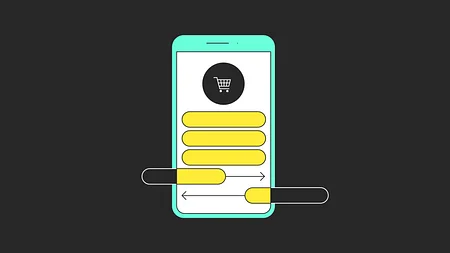Jobs to be done: Commoditized products have no purpose

The number one reason why new propositions fail is that they do not find product market fit. No-one sets out to build a dud product; everyone is shooting for the moon. So what separates the breakthrough successes from the desperate failures?
A key part of success is developing a purpose for your product and being able to strongly communicate why your product exists. Importantly, the 'why' is defined by focusing on customer outcomes, which is the reason many of the commoditised banking products lack any meaningful purpose.
Nailing the proposition
In previous posts, I’ve talked about the benefits of using Jobs To Be Done to define a proposition and the importance of doing this before you start designing anything. One of the most challenging and critical phases of this process is defining why your product should exist. What purpose does it fulfil for customers?
When building new digital challenger banks and financial products, we find that immersing small teams with diverse specialised skills in customer Jobs To Be Done (JTBD) is a way to fast-track defining purpose early on in any new venture. After weeks of listening to customers talk about their financial lives and reviewing the current landscape of competitor user journeys, the team will be highly attuned to where the opportunity is.
A great exercise for the team to converge on is to write a customer manifesto. This should articulate, in plain customer language, the problem your product will solve; empathise with the difficulties customers face; and establish some high level values that differentiate you from what has gone before. Importantly, this isn’t a set of features. This is a concise translation of the customer and market insights into a statement about why your business or proposition exists.
As you begin to develop your Minimum Lovable Product (MLP) this will anchor your decision making. While a lot will change over the coming weeks, months and years, your core purpose will remain largely stable.
Unlocking your purpose
It's a huge turning point when your team can easily articulate the core purpose of your business or product. However, arriving at this point can be difficult. I’ve always been inspired by Simon Sinek’s Golden Circle framework, if you’re not familiar with it, I recommend checking out his very popular TED talk. Sinek argues that the most successful companies “start with why”. They communicate why they exist, then they describe how they do it and only once they’ve done these two things do they talk about what they actually do.
This is widely accepted wisdom today, but what’s not fully understood is how to find your “why”. Using Jobs To Be Done in combination with Sinek’s Golden Circle is an extremely powerful way of unlocking your purpose. Jobs To Be Done helps unlock purpose because qualitative JTBD research focuses on understanding the customer job rather than evaluating the solution.
People don’t want to buy a quarter-inch drill, they want a quarter-inch hole.
Theodore Levitt
I’ve witnessed ideation sessions where the customer insight materials are focused on evaluating the customer journey for using or buying a product. All the pain points are mapped out and there is a focus on the emotional needs of the customer. The challenge with this kind of research is that it’s framed within the context of a pre-existing product or solution. Focusing on designing the next generation drill will constrain your ability to define a purpose that really resonates with the customer.
A product team should focus on doing fresh primary research where you observe how customers behave or speak to customers more broadly about how money fits into their lives. The 5 Whys technique is great for understanding higher-level needs, which are typically more emotional and social. With this kind of input your team will be able to quickly converge on defining your purpose. You’ll then be able to define your Minimum Lovable Product (MLP) by starting with why and building out from there.
Well-defined purpose equals well-defined MLP
From day one your product needs to deliver your core purpose which will be tightly aligned to the customer Jobs To Be Done you’re designing the proposition around. The purpose (the why) of your product can be defined by focusing your product on an underserved emotional or social job to be done. The 'how' is all about the intelligent digital services your product will offer to help customers make progress on that job. The 'what' will be the financial products (e.g. a savings account) that underpin the delivery of the proposition.

The temptation with any MLP is to build too much, which delays when you can get the product into customers' hands and start validating your proposition. Having a well-defined purpose and customer manifesto helps you prioritise what to build first. Drawing an MLP line across your roadmap is critical to keeping the proposition both minimal and lovable. Your customer manifesto is a great tool to determine where that line is drawn, i.e. what is built now, next and later. Using both the Golden Circle and the insights from Jobs To Be Done also helps you think about how you will define the marketing messages around the MLP. This is something that needs to be considered early on, not left until the product is designed.
Why start with 'why'?
The commodity products in the financial world tend to start with what they do, not why. Purpose is not about carefully crafting a corporate mission statement or producing some overly emotional advertising. Your purpose should define your team’s culture; it should ground your decision making and steer your product development. Marketing is then not just an afterthought. Marketing is telling your story, your reason for existing and how you’re positively impacting customers' lives.
If you get it right there are some huge upsides. The ultimate benefit for having a well-articulated purpose is that your brand becomes synonymous with highly desirable customer outcomes. Your brand becomes purpose-driven and is used as a verb in everyday conversation. For example, “Google it” or “FedEx it” or “WhatsApp me”. I don’t even need to explain what these mean because you all get it.
everyone uses @monzo as a verb now. Name one other bank that has that
— Melph (@Melphster) May 12, 2018
Historically, in the finance world, there are very few examples of this happening. There are technologies or processes that are used like “wire me the money” but nothing associated with the strength of a brand’s product. But this is starting to change, especially when it comes to sending money. The most globally recognised is “PayPal me” but there are also regional versions emerging. In the UK “Monzo me”, in the US “Venmo me” and in Holland “Tikkie me” are catching on. This tweet captures the sentiment of the difference in propositions between new challengers and incumbent banks in the context of being a purpose brand.
There are so many other underserved customer jobs to build truly digital services around, all of which could become purpose-driven like the examples above. The key to becoming a purpose-driven brand like Monzo or Google is to define why you exist as early on in the process as possible. JTBD is a powerful framework to unlock why your business exists. It places the customer right at the heart of everything you do and it is a great way to significantly improve your chances of finding product market fit.
Ryan organises a Meetup where you can talk to him and others all about jobs to be done in practice or you can email him at ryan@11fs.com or find him on Twitter @ryangarner



